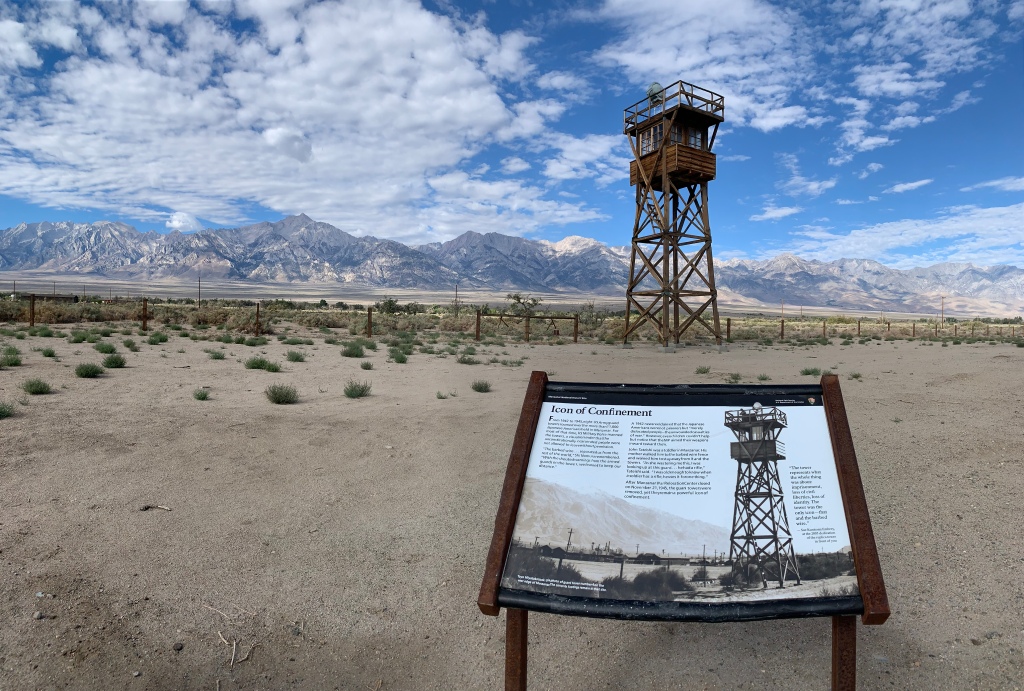
Manzanar was the first of ten internment camps incarceration sites for Japanese-American citizens (and some non-citizens) to be recognized as a park unit in 1992, symbolizing the whole program fiasco. Minidoka was enacted in 2001, Tule Lake in 2008 and Amache in 2022.
Unconstitutional incarceration, while a Federal program ordered by FDR, varied by state: Hawaii incarcerated few and west coast states many. Rules regarding how much Japanese ancestry got a US citizen locked up without trial also varied by state. No other group was incarcerated en masse. Popular sentiment (racism) generally backed incarcerating Japanese-American US citizens during the war.
George Takei spent his “boyhood behind the barbed wire fences” in Arkansas. He remembers that after his family was imprisoned, his neighbors “came to our house and took everything”. He recounts how after Pearl Harbor, many young Japanese Americans tried to enlist, were refused and were incarcerated. His experiences were common, and in many cases homes and all belongings were permanently lost during internment.
It was an egregious violation of the American Constitution.
George Takei
We were innocent American citizens, and we were imprisoned
simply because we happened to look like the people who bombed Pearl Harbor.
It shows us just how fragile our Constitution is.
Many of the citizens imprisoned here were teachers, doctors, skilled craftsmen, farmers, community leaders and otherwise productive members of our society. (One was a Mexican-Irish-American who got locked up here in solidarity). They sued for their rights and in 1944, the Supreme Court declared that a loyal citizen could not be detained under the Constitution. The executive order was rescinded the next day.
In this blog, I try to encourage people to look at mistakes in history and imagine a better course of action, because if we can’t fix our mistakes, then we have no hope of solving the climate crisis. It’s morally wrong to visit this site and think, “well, I suppose there was no other way”. Some have argued that it was for the protection of Japanese Americans or to stop espionage. But there were better ways available at the time to accomplish those objectives.
FDR clearly failed in his oath as President when he did not uphold the Constitution and imprisoned these citizens without cause. He also suffered a failure of imagination. Instead of internment, FDR could have established voluntary Japanese-American citizens councils, led by Japanese Americans to meet regularly among themselves, with civil defense, local law enforcement, and with government representatives to propose ways of supporting their communities and the war effort. The councils could have addressed both safety and spying allegations.
Instead of being locked up, these citizens could have spent the war teaching, working in hospitals or factories, growing food and supporting our war effort. Instead of being an American example of “concentration camps” like those of our enemies, FDR missed his opportunity to stand up for the freedom of these Americans as a positive example of our Constitutional liberties for the world.
Pingback: Amache National Historic Site | Zero Carbon Travel
Pingback: Klondike Gold Rush National Historical Park | Zero Carbon Travel
Pingback: American Concentration Camps | Zero Carbon Travel